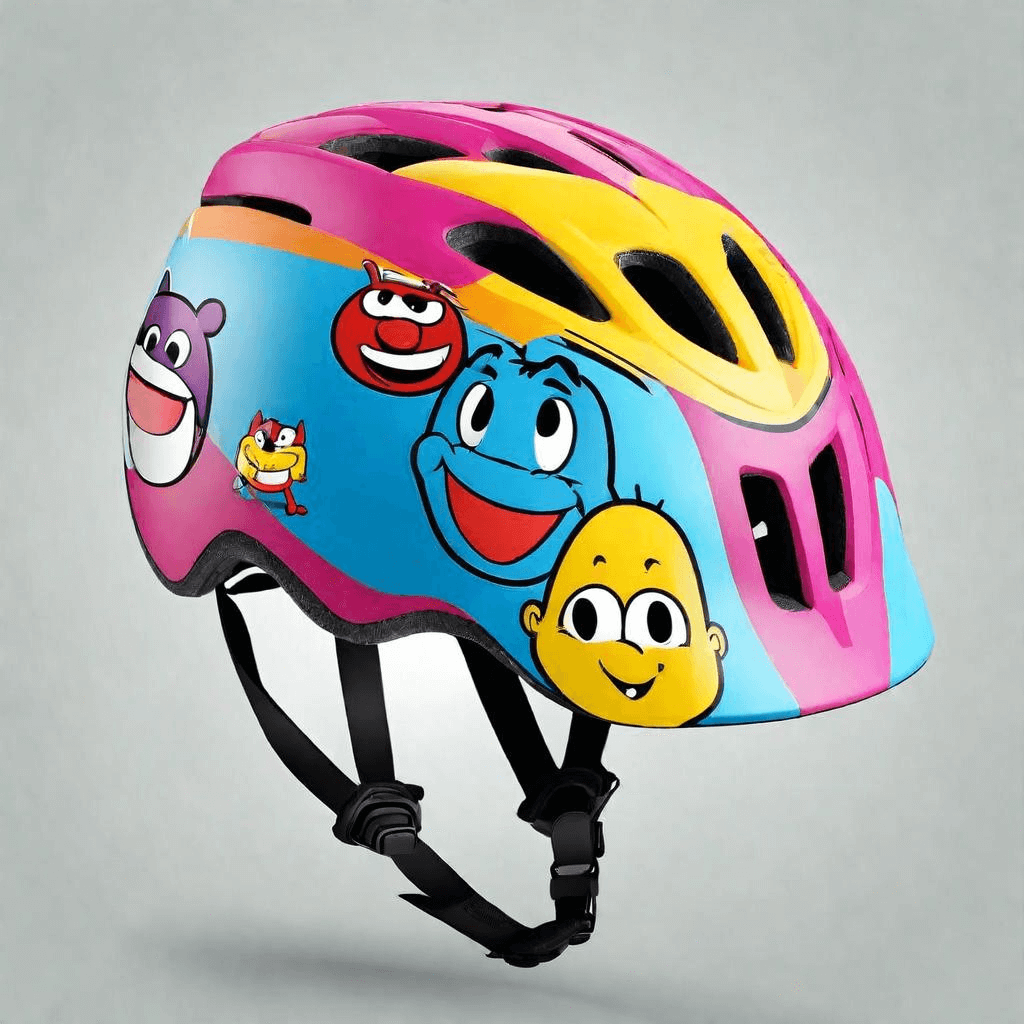Safety should always be the top priority when it comes to children. As parents and guardians, ensure the safety of your children while they enjoy outdoor activities like cycling. Research has shown that wearing a helmet can decrease the risk of head injury by up to 85% and brain injury by up to 88%.
In this article, we will focus specifically on kids bike helmets. We’ll explore why kids bike helmets are necessary, how to choose the right kids bike helmet, and tips for making sure kids wear helmets consistently. By the end, you’ll have a broader understanding of the importance of kids bike helmets and practical advice for keeping your young cyclists safe and happy. So, buckle up for fun, and let’s dive into the key aspects of safe cycling with a kids bike helmet.
Why Kids Bike Helmets Matter?
The primary purpose of kids bike helmets is to prevent head injuries, which can be life-altering or even fatal. When children ride their bikes, they are susceptible to falls and collisions, and the head is one of the most vulnerable parts of the body. kids bike helmets act as a protective barrier, absorbing the impact and significantly reducing the risk of severe injuries. In many regions, the use of bike helmets for children is not just recommended but required by law. These legal requirements are put in place to enhance safety and reduce the incidence of head injuries among young cyclists.

Types and Categories
Different Styles of Kids Bike Helmets
- Traditional Bike Helmets: Traditional kids bike helmets are the most common type, characterized by their rounded shape and ample ventilation. They are designed for general biking activities and provide basic protection and comfort.
- Full-Face Helmets: Full-face helmets offer extensive protection, covering the entire head and face. These are ideal for children engaged in more extreme biking activities, such as BMX riding or mountain biking, where the risk of high-impact falls is greater.
- Multi-Sport Helmets: Multi-sport helmets are versatile and can be used for various activities like biking, skateboarding, and rollerblading. They provide robust protection and are a good investment for children involved in multiple sports.
Age-Based Categories
- Helmets for Toddlers: Helmets designed for toddlers (ages 1-3) focus on extra safety features and comfort. They usually have additional padding and more secure strapping systems to keep the helmet in place on smaller heads.
- Helmets for Children: These helmets are for kids aged 4-10 and are designed to grow with the child. They offer adjustability features and come in a variety of designs to appeal to this age group.
- Helmets for Pre-Teens: Helmets for pre-teens (ages 11-13) are more similar to adult helmets in terms of design and functionality but still cater to smaller head sizes and youthful aesthetics.
Material and Construction Types
In-Mold Helmets: In-mold helmets feature a construction where the outer shell and the foam liner are fused together, making them lightweight and durable. This type of helmet offers superior ventilation and a sleek design.
Hard-shell Helmets: Hard-shell helmets have a separate outer shell and foam liner, providing robust protection. They are slightly heavier than in-mold helmets but offer great durability and impact resistance.
Soft Shell Helmets: Soft shell helmets are typically less common but offer a flexible and lightweight option. They are ideal for less intense activities and provide basic protection.
How to Choose the Right Kids Bike Helmet?
Fit is Everything
- When choosing a kids bike helmet it is important to ensure proper fit. A helmet that fits well on a child’s head provides optimal protection and comfort, reducing the chance of injury during a fall or collision.
- To achieve the right fit, start by measuring the circumference of your child’s head. Use a flexible tape measure to wrap around the widest part of their head, above the eyebrows and ears. Once you have the measurements, refer to the helmet size chart provided by the manufacturers to find the correct size.
- The helmet should sit evenly on the head covering the forehead without tilting backwards or forwards. The straps should be in a “V” shape under the ears, and the chin strap should be snug so that only one or two fingers can fit between the strap and the chin.
Certification and Standards
- When choosing a kids bike helmet, it’s essential to look for certifications and safety standards that guarantee the helmet’s effectiveness. In the United States, the Consumer Product Safety Commission (CPSC) certification is a key indicator of a helmet’s reliability.
- kids bike Helmets that meet CPSC standards have passed rigorous testing for impact protection, strap strength, and retention system effectiveness.
- Another important certification to consider is from the American Society for Testing and Materials (ASTM), which sets performance requirements for various sports helmets, including those for cycling. Helmets with these certifications ensure that they have been tested and meet high safety criteria.
Comfort and Design
- Comfort is a critical factor in ensuring that kids keep their helmets on during rides. Features such as adequate padding, ventilation, and adjustability enhance the overall comfort of a helmet.
- Padding inside the helmet not only provides a snug fit but also absorbs sweat and adds an extra layer of cushioning.
- Ventilation systems, which include strategically placed vents, help keep the head cool, preventing discomfort from overheating during long rides.
- Additionally, adjustable straps and retention systems allow for a customized fit, accommodating growth and ensuring that the helmet remains secure as the child rides. A comfortable helmet is more likely to be worn consistently.

Fun Factor
- The design and appearance of the helmet can significantly increase the child’s desire to wear the helmet. Kids love helmets that have bright colors, fun patterns, and favorite characters. Allowing kids to participate in the selection process by choosing a helmet with a design they like can make them more excited to wear it.
- Many manufacturers offer a wide range of designs specifically aimed at children, including elements that appeal to young cyclists. By choosing a helmet that is not only safe but also visually appealing, parents can encourage their children to wear it with enthusiasm, thus instilling a positive attitude towards cycling safety.
Top Brands for Kids Bike Helmet
- Schwinn: Schwinn has been a household name in the biking community for generations, known for producing reliable and affordable bikes and accessories. Their kids bike helmets prioritize safety without compromising on style, making them a popular choice among parents.
- Bell: Bell is a well-established brand in the cycling industry, famous for its innovative helmet designs and advanced safety features. They offer a wide range of kids bike helmets, with various colors and styles to suit every preference.
- Joovy: Joovy offers a range of kids bike helmets designed with both safety and comfort in mind. Their helmets feature adjustable fit systems and ample ventilation to keep young riders cool and protected during bike rides.
Tips for Getting Kids to Wear Their Helmets
Lead by Example
- Parents play a major role in shaping their children’s behaviour and attitudes when it comes to safety practices like wearing kids bike helmets.
- When parents consistently wear bike helmets while cycling, they set a powerful example for their children to follow. This demonstration underscores the importance of helmet use and normalizes it as a standard part of cycling.
- By leading by example, parents can install lifelong habits of safety and responsibility in their children, ensuring that helmet use becomes second nature.
Make it Routine
- Integrating helmet-wearing into cycling routines is another effective strategy to ensure children wear helmets consistently. Using the non-negotiable part of a helmet on every bike ride helps establish it as a habitual behaviour rather than an occasional practice.
- Parents can create a simple pre-ride checklist that includes bike tires, brakes, and most importantly, wearing a helmet. Repetition of this routine helps embed the practice in the child’s psyche, making it seem as natural as fastening a seatbelt in a car. Over time, children will automatically wear their helmets before each ride, realizing that riding a bicycle and wearing a helmet is essential.
Incentivize and Educate
- To make helmet-wearing fun and engaging for children, parents can use a combination of incentives and education. Offering small rewards, such as stickers, badges, or extra playtime, can motivate children to wear their helmets without resistance. Parents can also involve kids in customizing their helmets with stickers or decorations, making the helmet uniquely theirs and more enjoyable to wear.
- In addition to incentives, educating children about the importance of helmet safety is crucial. Parents can use age-appropriate explanations and stories to convey how helmets protect the head and prevent injuries. Visual aids, such as videos or demonstrations, can further illustrate the benefits of wearing a helmet.
Community Initiatives
Support local initiatives and organizations that promote kids bike helmet awareness and safety. Get involved in community events, helmet giveaways, or helmet fitting clinics to spread the message and ensure that every child has access to a properly fitting helmet.
Maintaining and Cleaning Your Helmet
- Regularly inspect your child’s helmet for signs of wear and damage. Look for cracks, dents, and frayed straps. Replace the helmet if any damage is found, as compromised helmets cannot provide adequate protection.
- Clean the helmet using mild soap and water. Avoid using harsh chemicals that could damage the helmet’s materials. Remove the pads and straps for thorough cleaning, and let them air dry completely before reassembling.
- Store the helmet in a cool, dry place away from direct sunlight. Avoid placing heavy objects on top of the helmet, as this can cause deformation. Proper storage helps maintain the helmet’s shape and integrity.
- Replace the helmet after any significant impact, even if no visible damage is present. Additionally, helmets should be replaced every 3-5 years due to material degradation over time. Check the manufacturer’s recommendations for specific guidelines.
Frequently Asked Questions (FAQs)
No, the price tag doesn’t necessarily correlate with safety. It’s more important to choose a helmet that meets safety standards and fits properly.
A child should wear a helmet whenever a child starts riding a bike or is transported in a bike seat or trailer, regardless of age.
Replace the helmet every five years or sooner if it has been involved in a crash or shows signs of damage.
Yes, it’s recommended to wear a helmet during any wheeled activity where there’s a risk of falling or colliding.
Stay firm and consistent with your helmet-wearing rules. Offer rewards for compliance, and explain the importance of safety in a way they can understand.
Yes, there are alternative helmet designs such as soft-shell helmets or helmet hats that offer protection in a more lightweight and compact form.
Prioritizing safety doesn’t have to be a tedious task. By choosing the right helmet, ensuring proper fit, and making wearing a helmet an enjoyable and non-negotiable part of biking activities, we can help protect your children from preventable head injuries. Celebrate the fun of discovering new trails, running down the street and feeling the wind on their face. Let’s get ready for fun and ensure safe cycling adventures for our little ones.

3 thoughts on “Buckle Up for Fun: The Key to Safe Cycling with Kids Bike Helmet – 2024”
Comments are closed.